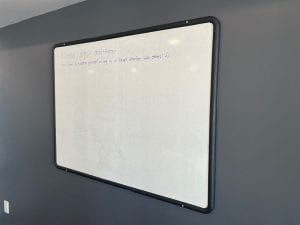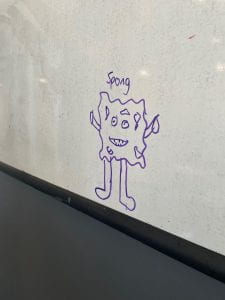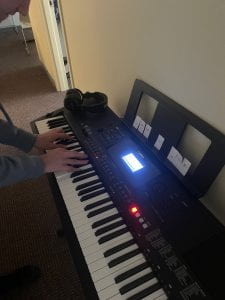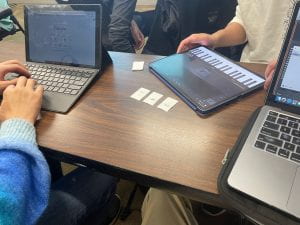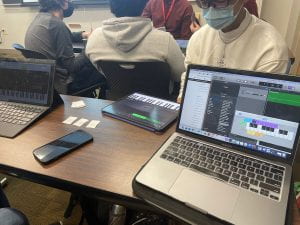The inspiration for this experience piece came from playing the game Overcooked by Ghost Town Games Ltd., which roughly simulates the stresses of being an overworked cook in a complex kitchen environment. The stress one experiences from playing this game can be very closely related to that which we all experience over the course of our college experience, which is exactly what I was going for in my parody game Understudied. Just as Takako Saito would take the game of chess and modify it to convey a completely different message, I wanted to modify overcooked so that it would accurately simulate the stress of trying to complete many tasks at once in a small amount of time.
Understudied can be played by 4-5 players with one player being the moderator, and the rest either working together or against one another to complete tasks. The goal of the game is to complete ten assignments back to back with the least amount of grade deductions possible.
Rules as the Moderator:
- Begin by allowing the players 30 seconds to prepare and complete tasks before the first assignment is released.
- Release the first assignment by rolling 2 dice (for vs) or 4 dice (for co-op) and announcing whichever corresponding tasks are rolled from the assignment creation box (marked in blue).
- Upon releasing the first assignment start a timer for a minute (each assignment is due after a minute), releasing the next assignment 15 seconds before the current assignment is due.
- When assignment timers run out, check that the players have either recorded their completed assignments (for vs) or are all present on the school tile space (for co-op). If they have not completed all tasks or all players are not on the school tile, a half a letter grade must be deducted from their current grade.
- If a player crosses the red boundary at any time during the game, their piece should be moved to the “timeout box”. You must roll a d6 and assign this player a timeout time corresponding to a border event (marked in red).
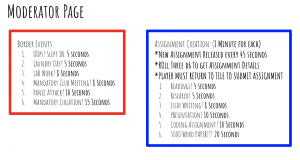
Rules as a Player:
- Start at any tile on the board. *You should optimally position yourself in front of an assignment so that you can get started on it immediately when time starts*
- To begin tasks all you must do is use the arrow keys to move your piece to a tile adjacent to whichever task you would like to complete. Once adjacent to a task, begin a timer associated with that task. While this timer is running, you may move around freely and/or start another task if you would like.
- When a task timer ends, you must return to a tile adjacent to that task to complete it.
- *For Co-Op Only* When assignment is due, you and all of your teammates must be on the school tile in order for any of your tasks to be counted.
- You must not cross the red boundary lines at any time unless you are willing to accept a small time penalty.
Game Board for CO-OP and VS:
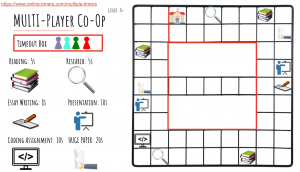
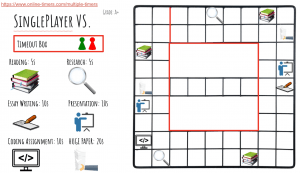
Short Video of CO-OP Gameplay:
Link to Parodied Game:

